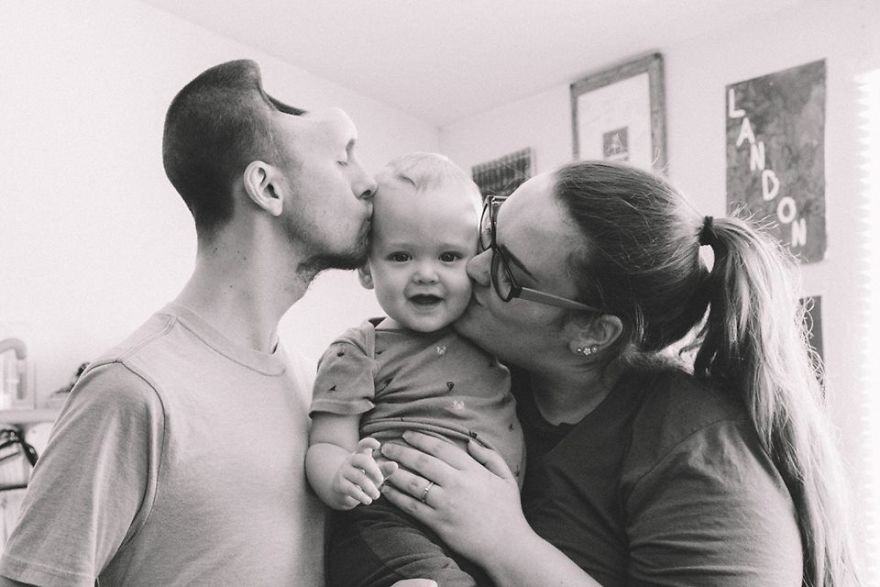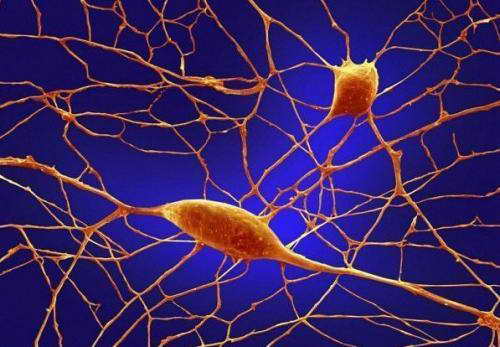脑细胞能否再生不重要,有案例证明,整个左半脑切除,人的生活能力基本能恢复到正常。MRI扫描发现,在右脑的某些区域,发展为代替右脑的功能。
下面是从我的文章摘录复制的:
1.2.. A 32 years old man recovered as normal after lost left brain
http://www.kwcg.ca/bbs/home.php?mod=space&uid=61910&do=blog&id=6002
Dec. 14, 2015, YouTube published an episode of video The secret of a man with a half brain with title in Mandarin. https://www.youtube.com/watch?v=BqSmSBPmsik
The video introduced a British man Mr. Charie, in 2012, 32-year-old Charie travels in Thailand, fell down from 7 meters high with head to the ground, his all signs of life disappeared, 1/4 skull crushed, the left brain removed.
After two days of surgery, he miraculously recovered, after a period of language barriers and obstacles to action, he recovered as normal.
The doctor implanted a Titanium plate as skull into his brain and fixed with screws on the remained skull. His appearance and body flexibility were recovered back to normal.
Above were the photos of Mr. Charie from video screenshots
In 2015, 35 years old Mr. Charie has a job, lives in a normal life with his family in the UK.
1.4.. A man lives with half of brain
October 13, 2017, article Woman Shares What Energy Drinks Did To Her Husband While She Was 9 Months Pregnant reports a man's brain was damaged by Energy Drinks, after surgery and two weeks of living in a hospital, he survived back home.
Follow was photo of the happy family.

1.1.. The lost functions with cut of left brain developed on remained right brain
Aug. 14, 2917, YouTube published an episode of video Discovery Brain Nerves with title in Mandarin.
https://www.youtube.com/watch?v=9jDd0lF5bak&t=1008s
The video introduced a computer enhanced brain image of a 35 year old man Mr. Boo, when was as a boy, he underwent the surgery of cut off left brain.
Now, Mr. Boo lives a normal life.
Follow was the video screenshots of a PET scan of the right brain of Mr. Boo.
The colors reveals that his speech ability normally handled by the brains left side has migrated to the right side where Boo’s speech ability handled by other neural networks.
Sorry, Adults, No New Neurons For Your Aging Brains
Study questions whether adults can really make new neurons
Birth of New Neurons in the Human Hippocampus Ends in Childhood
Human Brains Stop Creating New Neurons in Adulthood
大脑不断出现新生细胞 凸显生命奥妙无限
2016-03-18 9:09 AM
http://www.epochtimes.com/gb/16/3/15/n4663356.htm?
科学家首次观察到大脑中新生脑细胞的具体活动情况,这些细胞和学习记忆等认知能力有关。该研究进一步证实,成年大脑会产生新的脑细胞,大脑在出生后的细胞数量不是固定不变的。
最新一期《神经元》(Neuron) 杂志登载的一项研究报告描述,科学家首次在活的小鼠大脑中观察到新生脑细胞发射信号的情形。
而且这些新生脑细胞(也称为“神经元”)和动物的学习与记忆有关系。如果这些新生神经元的功能被屏蔽,那么动物出现学习和记忆障碍而不能很好的适应周围环境。
据《新科学家》近日报导,长期以来,我们一直认为大脑的细胞数量在出生后就已经固定,脑细胞只能随年龄增长而越来越少。但是现在我们改变了看法,因为最新研究在大脑的具体区域看到了新生脑细胞的活动情况。
哥伦比亚大学等研究机构的科学家首次使用双光子显微镜,在活的小鼠大脑齿状回(dentate gyrus)中找到新生神经元在活动时发出信号的情况。科学家认为齿状回区域和学习记忆有关。
新生脑细胞和认知功能有关
在成年鼠的这个大脑区域,新生和已经成熟的神经元相互混杂。该成像方法显示出新生的神经元发出红色萤光,而那些出生前即已经成熟的神经元发出绿色萤光。
报导说,科学家让小鼠在跑步机上运动,同时给它不同的气味(如香蕉的气味)、声音、光线等刺激。有时给小鼠的是它喜欢的东西,有时是能让它厌烦或害怕的刺激甚至电给予击,之后小鼠会形成各种记忆。
研究人员发现,小鼠在对待那些刺激时,其大脑中的新生神经元比成熟神经元的反应更活跃、更容易兴奋、发射的信号更散乱。但是,这种活跃兴奋的持续时间不长。而六周后,新生神经元的功能变得更加成熟。
研究人员尤其注意到,如果抑制这些新生脑细胞的功能,小鼠则不能很好地记忆在跑步机上的经验,而且对周围的新情况适应力变差,例如有感到更害怕等表现。
大脑不断产生新的脑细胞
报导说,该研究至少证实成年大脑中的新生神经元对于学习是非常关键的因素,这一研究可能有助于寻找抑郁、焦虑等疾病的治疗方法。
德克萨斯州立大学的神经学家麦克?德鲁(Michael Drew)对此研究评述到,该实验非常好,给人留下深刻的印象,因为能观察到活的神经细胞的功能是很不容易的。
早在2012年11月,纽约石溪大学(Stony Brook University)发现成年动物的大脑有新生神经细胞,即使已经衰老的大脑也会产生新的脑细胞。
石溪大学的科学家是在大脑的海马体中发现这些细胞。因为这个区域和学习记忆有关,所以认为大脑新生细胞和学习等认知能力有关。责任编辑:林妍
Newborn neurons -- even in the adult aging brain -- are critical for memory
https://www.sciencedaily.com/releases/2012/11/121111152944.htm
 Dr. Shaoyu Ge and Yan Gu of Stony Brook University display the image of newborn neurons illustrated by the new optogenetic labeling and controlling technique.Credit: Image courtesy of Stony Brook University
Dr. Shaoyu Ge and Yan Gu of Stony Brook University display the image of newborn neurons illustrated by the new optogenetic labeling and controlling technique.Credit: Image courtesy of Stony Brook University
Newly generated, or newborn neurons in the adult hippocampus are critical for memory retrieval, according to a study led by Stony Brook University researchers to be published in the November 11 advanced online edition of Nature Neuroscience. The functional role of newborn neurons in the brain is controversial, but in "Optical controlling reveals time-dependent roles for adult-born dentate granule cells," the researchers detail that by 'silencing' newborn neurons, memory retrieval was impaired. The findings support the idea that the generation of new neurons in the brain may be crucial to normal learning and memory processes.
Previous research by the study's lead investigator Shaoyu Ge, PhD, Assistant Professor in the Department of Neurobiology & Behavior at Stony Brook University, and others have demonstrated that newborn neurons form connections with existing neurons in the adult brain. To help determine the role of newborn neurons, Dr. Ge and colleagues devised a new optogenetic technique to control newborn neurons and test their function in the hippocampus, one of the regions of the brain that generates new neurons, even in the adult aging brain.
"Significant controversy has surrounded the functional role of newborn neurons in the adult brain," said Dr. Ge. "We believe that our study results provide strong support to the idea that new neurons are important for contextual fear memory and spatial navigation memory, two essential aspects of memory and learning that are modified by experience.
"Our findings could also shed light on the diagnosis and treatment of conditions common to the adult aging brain, such as dementia and Alzheimer's disease," he said.
Dr. Ge explained that their findings may help specifically to advance research on cell-replacement therapies being investigated for neurological diseases of the brain affecting memory.
In the study, Dr. Ge and colleagues used a retroviral tool to deliver optogenes: genes that are engineered to express proteins that form channels responsive to light stimulation. Using their created opto-retrovirus, the research team labeled a cohort of newborn neurons that they could control with light illumination. By doing this, the team conducted an in-depth exploration of the circuit and behavioral functions of newborn neurons in the adult mouse brain.
The researchers first determined when the neurons were "ready" in the hippocampus, which is an important addition to their findings published earlier this year in Nature. Then they 'silenced' the activity of neurons of different ages. They found that by silencing four-week-old neurons, an age known to be more responsive to change than existing neurons, but not older or younger neurons, memory retrieval was impaired in tasks known to depend on the functions of the hippocampus.
Regarding the newborn neuron controlling method, Dr. Ge and colleagues said that the novel tool and approach used in the study can be applied to other circuit and behavioral studies to access the functional contributions of newborn neurons in the adult brain.
Co-authors of the study include: Yan Gu, Jia Wang, and Stephen Janoschka of the Department of Neurobiology and Behavior at Stony Brook University School of Medicine; and Maithe Arruda-Carvalho, Sheena Josselyn, and Paul Frankland of the University of Toronto in Canada.
Story Source:
Materials provided by Stony Brook University. Note: Content may be edited for style and length.
Journal Reference:
Yan Gu, Maithe Arruda-Carvalho, Jia Wang, Stephen R Janoschka, Sheena A Josselyn, Paul W Frankland, Shaoyu Ge. Optical controlling reveals time-dependent roles for adult-born dentate granule cells. Nature Neuroscience, 2012; DOI: 10.1038/nn.3260
Cite This Page:
Stony Brook University. "Newborn neurons -- even in the adult aging brain -- are critical for memory." ScienceDaily. ScienceDaily, 11 November 2012.
- November 11, 2012
- Stony Brook University
- Newborn neurons in the adult hippocampus are critical for memory retrieval, according to a new study.
研究再次发现 成熟大脑细胞可再生
http://www.epochtimes.com/gb/17/8/21/n9552207.htm
科学家再次在成熟大脑中发现神经细胞再生现象,这可能有助于治疗焦虑、抑郁和创伤后应激障碍(PTSD)等心理疾病。
澳洲昆士兰大学的科学家近日发表报告说,在成熟小鼠大脑的杏仁核(amygdala)里发现新生脑细胞。杏仁核与处理情绪和记忆有重要关系,该区域损伤或有病变,可能会发生焦虑症,如创伤后应激障碍。
昆士兰脑研究所主任萨赫(Pankaj Sah)表示,该新发现对于进一步了解大脑的适应和再生能力有重要意义。
萨赫教授说:“现在,我们在成年小鼠大脑的杏仁核中发现干细胞,这表明在海马和杏仁核两侧有新生神经细胞的现象。该发现加深了我们对脑可塑性的理解,为研究杏仁核的新生神经细胞的功能和分布提供思路。”
研究者之一加弗利(Dhanisha Jhaveri)博士说,杏仁核在恐惧学习中发挥了关键作用。
加弗利博士解释:“恐惧学习会导致经典的逃离或打斗反应,如心率增快、口干、手掌出汗。但是,在恐惧症或创伤后应激障碍的病例中,杏仁核也会产生恐惧和绝望的感觉。”
因此,科学家根据该研究,希望能找到刺激杏仁核产生新细胞的方法,以便尝试治疗焦虑、PTSD和抑郁症的新疗法。

“虽然以前知道成熟大脑中会产生新神经元。但这是在杏仁核中首次发现新生细胞,令人非常高兴。”萨赫教授说,“该发现对人们理解杏仁核在调节恐惧和恐惧记忆中的作用有着重大意义。”
昆士兰大学的科学家巴特利特(Perry Bartlett)教授曾在海马中发现神经细胞再生的现象。海马是大脑中与空间学习和记忆有关的重要脑区。
近一百年来,科学界认为成熟大脑无法再生细胞,脑细胞只能不断地发生死亡。萨赫教授表示,巴特利特教授的发现推翻了人们认为大脑细胞不可再生的看法。
巴特利特教授也参与了此次的最新研究。
日实现活体动物脑内神经细胞再生
新华社东京7月16日电日本研究人员15日在英国《自然杂志神经学专刊》网络版上报告说,他们首次在活体实验鼠脑内实现神经细胞再生。这一成果有望促进神经再生医疗研究。

活体动物脑内神经细胞再生
此前科学界一直认为,可生成脑内神经细胞的干细胞,其功能在胎儿时期就基本停止,即使出生后由于事故和疾病导致脑损伤,其脑神经干细胞也无法发挥再生作用。
日本东京大学的研究人员发现,在胎儿的脑神经干细胞中,高迁移率族蛋白A一直在发挥作用,但该蛋白在婴儿出生后很快就不发挥作用了。研究小组选取了能使这种蛋白持续发挥作用的基因,并将其植入出生仅数天的实验鼠的大脑神经干细胞,结果实验鼠恢复了脑神经细胞再生能力。
领导这项研究的后藤由季子教授表示,下一步他们会利用成年实验鼠测试这种方法能否实现神经细胞再生
《自然》:死一个少一个!中美科学家联合发现,成年人脑细胞无法再生,珍惜吧 | 科学大发现
2018-03-09 08:20 奇点网
https://3g.163.com/tech/article/DCEK1NEI051182D7.html
在过去的几十年里,不断有新的证据表明,人类大脑神经元是可以自我更新的,这无疑给治疗和预防神经系统疾病带来了希望。不过这个希望在今天被暂时打破了。本周《自然》上的一项新研究表明,人类大脑中新生神经元的数量会随发育急剧下降,而成年人则不会产生新的神经元[1]。
真的是个悲伤的消息,这意味着我们的脑细胞用一个少一个,一傻不复还了。
对于人类大脑中新生神经元的争论是自古就有的。神经科学刚刚发展起来的时候,学界的普遍共识就是,大脑神经元像心肌等细胞一样,出生的时候是多少就只有多少,不会进行自我修复和更新。
不过到了20世纪60年代,一项研究打破了这个定论。当时麻省理工的Joseph Altman发现,在成年哺乳动物的大脑内存在新生神经元。又过了一段时间,80年代,洛克菲勒大学Fernando Nottebohm实验室也在禽鸟身上发现了类似的现象。1998年,科学家们得到了第一份证据,在成年死亡癌症患者脑中发现了由5-溴脱氧尿苷(BrdU)标记的新生神经元。2013年的一项研究更是令学界大振——通过分析55名死者脑组织的单个神经元,卡罗林斯卡研究所的研究者们得出了一个结论,人类大脑海马齿状回中,每天都能产生700个新的神经元。[2,3]
海马是人类大脑中的一个关键区域,它已经被证实,和学习、记忆、压力、锻炼等多个生理过程有关,它的变化涉及到各类神经系统疾病[4-8]。如果大脑可以通过产生新的神经元进行自我更新,那么提高先天再生能力来恢复受损大脑的活动就变成了一条可行的路。
本项研究的通讯作者之一,就职于加州大学洛杉矶分校的Arturo Alvarez-Buylla也是致力于这个领域的研究者之一。当年他还是Fernando Nottebohm实验室的一名普通学生,而今天已经成为了脑发育领域的顶尖专家。过去的三十年里,他对大脑新生神经元科研做出了极大的贡献。他也坚信,在成年人类大脑中也存在新生神经元。
Arturo Alvarez-Buylla教授
然而事实并非如此。
鉴于人类大脑标本实在难以获得,Alvarez-Buylla教授组建了一个国际团队,最终获得了59份人类脑组织标本,分别来自尸检样本和癫痫手术切除的脑组织样本,其中成年人的年龄层从18-77岁。这项工作我国复旦大学脑科学研究所的杨振刚教授也有参与,并名列通讯作者之一。
研究者对这些脑组织样本进行了抗体荧光标记,并通过影像学技术确认细胞形态来验证。结果显示,脑部的新生神经元主要出现在胎儿发育期,并在14周的时候数量达到顶峰,22周以后则开始减少;同时,新生神经元表现出细长而简单的细胞形态,并随着发育逐渐生长为成熟的神经元形态。而到了7岁左右,就基本不会再产生新生神经元了。
研究者对各年龄段的海马颗粒细胞层(GCL)新生神经元进行了计数。在刚出生的时候,每平方毫米的新生神经元能够达到1618±780个;在1岁的时候,下降到292.9±142.8;7岁时,仅有12.4±5.3;13岁就只有2.4±0.74这么一点点了。
而在成年人的脑标本中,研究者没有发现任何分裂细胞/新生神经元的迹象。
随年龄增长,新生神经元逐渐减少(绿)
研究者也尝试在恒河猕猴脑中寻找分裂细胞和新生神经元的蛛丝马迹。
关于恒河猕猴脑中新生神经元是否存在,既往的两项研究采取了不同的标记方式,也产生了截然不同的结果[9,10]。研究者用研究人脑标本一样的思路对不同年龄段的猴脑进行了检测,发现在出生后到一岁半期间,新生神经元的数量降为1/8;在一岁半到七岁之间,更是直降为1/35。新生神经元的数量变化大体上与人脑一致。
使用两种标记方式标记的猴脑中新生神经元
最后,研究者检测了人脑和猴脑在一岁半时的表达谱,结果显示与新生神经元相关的DCX、TUJ1、Ki-67等蛋白的表达显著降低。
左中右分别为分裂细胞的标记、新生神经元的标记、成熟神经元的标记
从整体结果来看,毫无疑问,我们能够得出结论,海马的新生神经元数量在出生后显著下降,并且成年之后基本不会产生新神经元。但是这项研究成果与以往的一些数据既然相反,在同领域的研究者之间引起了争议。
德国德累斯顿科技大学的神经科学家Gerd Kemperman表示,只是科学家没有观察到新的神经元,这并不意味着新神经元不存在。研究中使用的脑组织毕竟只是样本,对新生神经元标记的可靠性很大程度上取决于组织的质量,很容易受外部环境的影响。
阿姆斯特丹大学的神经科学家Paul Lucassen也表示,用于保存和稳定组织样本的化学物质也可能进一步防止标记和靶细胞的结合。
另外一些神经科学家还提出,脑组织的主人身体和神经状态也是很重要的。运动、压力、疾病等因素都会影响新生神经元的数量[11]。
对于这些疑问,Alvarez-Buylla教授表示认同,并提出了自己的看法。既往研究的标记方法有可能混淆了新生神经元和胶质细胞,因为它们会产生同样的标志物;另一方面,脑组织受到死亡情况和疾病情况的影响,但是在具有多种死亡原因和疾病状态的患者组织都得到了类似的结果,这也能够一定程度上说明问题。
研究者承认这项研究的局限性——再怎么仔细地检测,也不能够完全说明海马中不存在新生神经元。但是第一作者之一的Shawn F. Sorrells也提出了一个观点:“我们退一步想,如果新生神经元已经罕见到我们无法检测,那么它真的在海马的记忆和学习功能中发挥重要作用吗?”
乐观一点想,发现成人海马不存在新生神经元,也未必是件坏事。目前我们已知啮齿类动物和禽类成年后仍会产生新的神经元,而海豚和鲸类这些更加聪明、行为更加复杂的水生动物则也不会产生新生神经元[14]。知晓了这些差异,对于我们进一步研究这些差异为何产生是很有帮助的。
毕竟科学就是个探索未知的过程嘛。
参考资料:
[1] https://www.nature.com/articles/nature25975#f14
[2]http://www.cell.com/cell/fulltext/S0092-8674(16)31404-0
[3] Spalding, K. L. et al. Dynamics of hippocampal neurogenesis in adult humans.Cell 153, 1219–1227 (2013).
[4] Kempermann, G., Kuhn, H. G. & Gage, F. H. More hippocampal neurons in adult mice living in an enriched environment. Nature 386, 493–495 (1997).
[5] van Praag, H., Kempermann, G. & Gage, F. H. Running increases ce llproliferation and neurogenesis in the adult mouse dentate gyrus. Nat. Neurosci.2, 266–270 (1999).
[6]Lugert, S. et al. Quiescent and active hippocampal neural stem cells with distinct morphologies respond selectively to physiological and pathological stimuli and aging. Cell Stem Cell 6, 445–456 (2010).
[7] Malberg, J. E. & Duman, R. S. Cell proliferation in adult hippocampus is decreased by inescapable stress: reversal by uoxetine treatment. Neuropsychopharmacology 28, 1562–1571 (2003).
[8] Hill, A. S., Sahay, A. & Hen, R. Increasing adult hippocampal neurogenesis is sufcient to reduce anxiety and depression-like behaviors. Neuropsychopharmacology 40, 2368–2378 (2015).
[9] Kornack, D. R. & Rakic, P. Continuation of neurogenesis in the hippocampus of the adult macaque monkey. Proc. Natl Acad. Sci. USA 96, 5768–5773 (1999).
[10] Gould, E. et al. Hippocampal neurogenesis in adult Old World primates.Proc. Natl Acad. Sci. USA 96, 5263–5267 (1999).
[11] http://dx.doi.org/10.1007/s00441-017-2735-4
[12]https://www.nature.com/articles/d41586-018-02812-6
[13]https://www.sciencedaily.com/releases/2018/03/180307141356.htm
[14] Knoth, R. et al. Murine features of neurogenesis in the human hippocampus across the lifespan from 0 to 100 years. PLoS ONE 5, e8809 (2010).
成年人神经或无法再生
作者:宗华 来源:科学网 2018/3/9 18:50:04

新神经元在新生儿的大脑内是可见的(上图),但并未出现在35岁成年人的大脑组织中(下图)。
图片来源:KEN PROBST
过去20年间,成年人每天能产生上百个新神经元的证据,点燃了增强治疗性细胞诞生能力的希望。研究人员推断,促进神经再生或能预防或者治疗抑郁症、阿尔茨海默氏症和其他大脑疾病。不过,一项日前发表于《科学》杂志的争议性研究表明,神经元的产生在经历早期发育后大幅减少并且到成年时慢慢停止。
加拿大多伦多病童医院神经科学家Paul Frankland表示,在成年人和猴子大脑中“竭尽全力搜寻”新神经元的结果“将会令很多人失望”。美国哥伦比亚大学神经科学家René Hen则表示,“最新研究引发了这样的担忧,即神经再生水平过低,以至于无法在人类体内产生重要功能。”
1998年,关于成年人神经再生的首个证据来自死亡的癌症患者的大脑。他们在世时,曾接受过一种名为溴脱氧尿苷的化学物质的注射。该物质能标记新分化的细胞,并且出现在这些患者大脑内的一些海马体(和记忆、学习相关的海马状结构)中。2013年,来自瑞典卡罗林斯卡研究所的Jonas Frisén团队对55名已去世患者大脑组织中的单个神经元进行了碳年代测定。该团队根据细胞年龄推测,人类每天在编码记忆的一个海马体区域——齿状回区更新700个神经元。
不过,自上世纪80年代起便一直研究大脑产生新细胞能力的加州大学旧金山分校研究人员Arturo Alvarez-Buylla对此持怀疑态度。他带领团队花费5年时间,收集了来自不同年龄段(从出生前到77岁)的59人的大脑组织。这些人当时已经死亡,或者其大脑组织在癫痫手术期间被移除。研究人员利用荧光抗体标记了对处于不同成熟度的细胞具有特异性的蛋白。他们还利用电子显微镜,寻找了特有的细长且形状简单的年轻神经元。
该团队发现,人们在生命早期拥有大量的神经干细胞和祖细胞——出生时,每平方毫米大脑组织平均拥有1618个年轻神经元。不过,这些细胞并未继续形成神经干细胞的增殖层,同时新神经元的产生在1~7岁减少了23倍。到成年时,新神经元的供应逐渐完全消失。(宗华)
m









